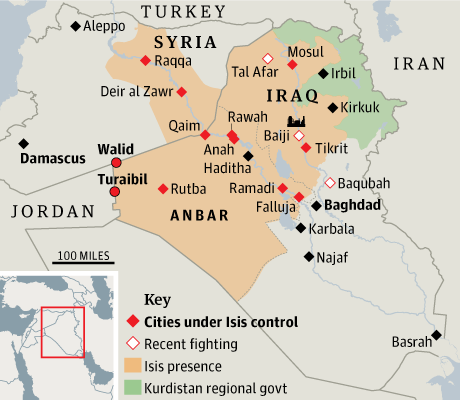June 23 (Reuters) - Gold eased further from a two-month high on Monday on stronger equities and sluggish physical appetite, even as safe-haven demand from escalating violence in Iraq kept the metal above $1,300 an ounce.
Spot goldhad eased 0.2 percent to $1,311.70 an ounce by 0158 GMT. The metal, which posted its best week in three months on Friday, rose to a two-month high of $1,321.90 in the previous session, although it closed down 0.5 percent.
With the higher prices, physical demand from top consumers China and India has been slow to pick up, adding to the gloom brought on by stronger equities. Asian stocks rose on Monday after Wall Street advanced to new highs and fanned risk appetite.
"The bias remains for weaker gold prices, with little physical interest from China and investor holdings equally lacking direction," ANZ analysts said in a note.
Gold is considered an investment-hedge, and is often bought during times of geopolitical and financial uncertainty.
"There is underlying support from the geopolitical tensions in the Middle East, but with Wall Street near record highs, risk appetite looks strong and that is hurting gold," said a precious metals trader in Hong Kong.
"Without strong demand either from the physical markets or from exchange-traded funds, the gold rally is not going to last."
Traders said physical demand across Asia has been subdued as many expect gold prices to fall further.
Demand is also being hurt by large purchases last year, when gold prices fell 28 percent, and earlier this year.
Meanwhile, bullion is being supported by geopolitical tensions. Iran's supreme leader accused the United States on Sunday of trying to retake control of Iraq by exploiting sectarian rivalries, as Sunni insurgents drove towards Baghdad from new strongholds along the Syrian border.
The metal was also supported by fighting in Ukraine.
Spot gold
With the higher prices, physical demand from top consumers China and India has been slow to pick up, adding to the gloom brought on by stronger equities. Asian stocks rose on Monday after Wall Street advanced to new highs and fanned risk appetite.
"The bias remains for weaker gold prices, with little physical interest from China and investor holdings equally lacking direction," ANZ analysts said in a note.
Gold is considered an investment-hedge, and is often bought during times of geopolitical and financial uncertainty.
"There is underlying support from the geopolitical tensions in the Middle East, but with Wall Street near record highs, risk appetite looks strong and that is hurting gold," said a precious metals trader in Hong Kong.
"Without strong demand either from the physical markets or from exchange-traded funds, the gold rally is not going to last."
Traders said physical demand across Asia has been subdued as many expect gold prices to fall further.
Demand is also being hurt by large purchases last year, when gold prices fell 28 percent, and earlier this year.
Meanwhile, bullion is being supported by geopolitical tensions. Iran's supreme leader accused the United States on Sunday of trying to retake control of Iraq by exploiting sectarian rivalries, as Sunni insurgents drove towards Baghdad from new strongholds along the Syrian border.
The metal was also supported by fighting in Ukraine.
